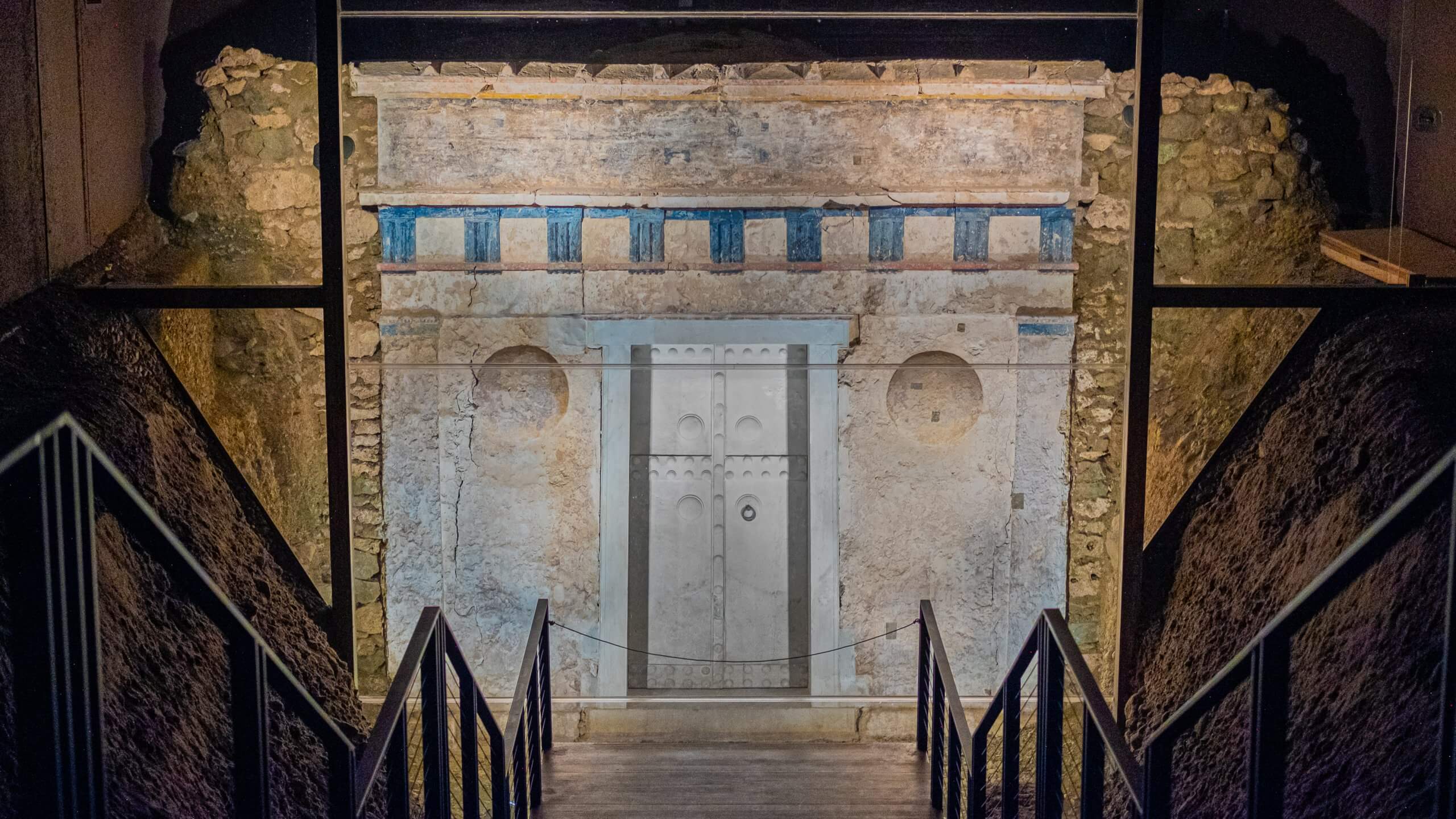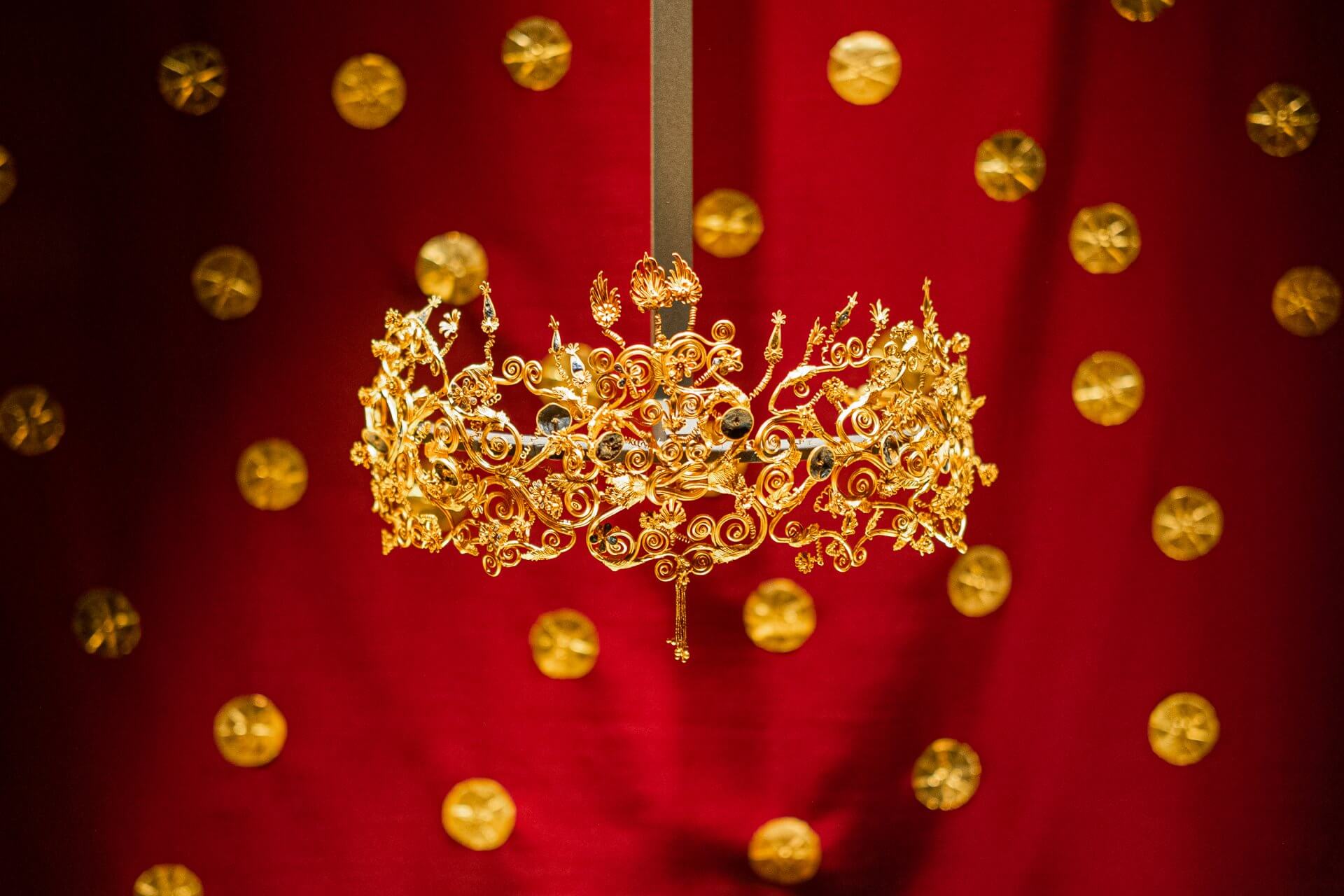Vergina is only 70 kilometers from Thessaloniki and it is a definite must-visit destination if you are in the area! The Archaeological Site of Aigai is a World Heritage Centre by UNESCO. Vergina is located in the area of the ancient city Aigai. It was the first capital of Macedonia before its transfer to Pella from King Archelaos.
The discovery by Michalis Andronikos
For the archaeologist, Michalis Andronikos the excavations outside Vergina village were a work of life. Since 1952, lead mostly from a feeling, he focused his research on a short hill – Tumulus. A hill that was not fitting to the general morphology of the area. A not unusual technique for the ancient years having been reported from the Homer himself.
In 1977 he found the first Macedonian tomb in the area. The tomb was looted but a wall paint convinced him that he was just some meters before a big discovery.

On the 11th of November 1977, Michalis Andronikos discovered a second tomb, intact this time. To everyone’s surprise, all its treasures were untouched for 23 centuries! This tomb belongs to the father of Alexander the Great, the Macedonian King Filipp.
Even if there is some controversial conversation regarding whose the tomb is (some academics believe that belongs to Alexander the Great himself) the entire complex is assumed as the biggest archaeology discovery in the 20th century in Europe!
The tombs
In Vergina, we faced a museum totally different from anything else we have ever visit worldwide. It is 100% underground and the entire concept makes you feel like you are in a catacomb.

As the tradition required, Philipp was cremated on a majestic funeral fire in the same fashions as Homer’s heroes. Into the fire were also thrown weapons, perfumes, oil, and fruits. After the cremation, the bones were carefully gathered and washed with wine and laid in the gold chest. The chest was then enclosed in a marble sarcophagus and the heavy door was closed and sealed forever.

We were amazed by the 5 ivory heads found and are being exposed to the museum which perhaps are members of the family. Philip, Alexander, perhaps Olympiada’s (Alexander’s mother) while for the rest two there is still a controversial discussion. Unfortunately, we didn’t take any photos of them. We would be more than happy if a visitor send us one photo in order to post.
The symposium, the central event of life on earth, was taking place for the advocates of the Platonic idealist who believed that death is the start of a new life. For this reason in Vergina’s tomb were found all the necessary tableware for the event. All of them were decorated with faces of the 12 Gods and Greek mythology.






Leave a reply